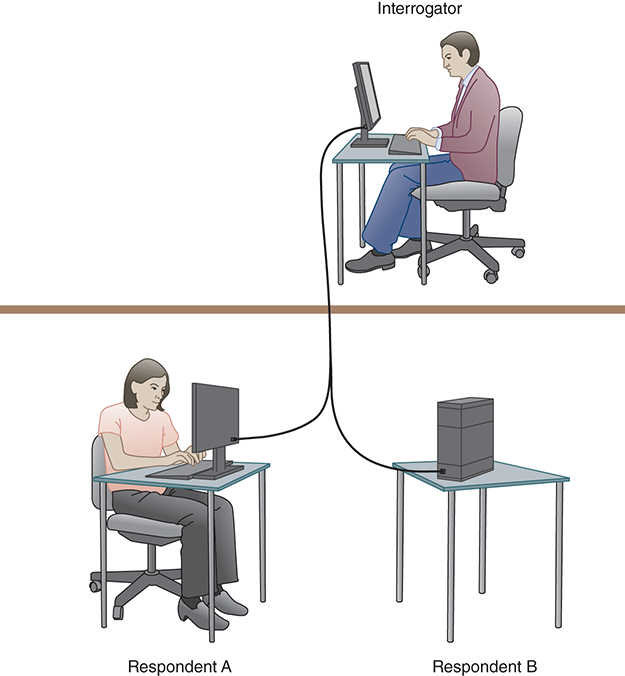13.1 Thinking Machines
Computers are amazing devices. They can draw complex three-dimensional images, process the payroll of an entire corporation, and determine whether the bridge you’re building will stand up to the pressure of the traffic expected. Yet they may have trouble understanding a simple conversation and might not be able to distinguish between a table and a chair.
Certainly a computer can do some things better than a human can. For example, if you are given the task of adding 1000 four-digit numbers together using pencil and paper, you could do it. But the task would take you quite a long time, and you very likely would make errors while performing the calculations. A computer could perform the same calculation in a fraction of a second without error.
However, if you are asked to point out the cat in the picture shown in FIGURE 13.1, you could do it without hesitation. A computer, by contrast, would have difficulty making that identification and might very well get it wrong. Humans bring a great deal of knowledge and reasoning capability to these types of problems; we are still struggling with ways to perform human-like reasoning using a computer.

FIGURE 13.1 A computer might have trouble identifying the cat in this picture
Courtesy of Amy Rose
In our modern state of technology, computers are good at computation, but less adept at things that require intelligence. The field of artificial intelligence (AI) is the study of computer systems that attempt to model and apply the intelligence of the human mind.
The Turing Test
In 1950, English mathematician Alan Turing wrote a landmark paper that asked the question: Can machines think? After carefully defining terms such as intelligence and thinking, he ultimately concluded that we would eventually be able to create a computer that thinks. But then he asked another question: How will we know when we’ve succeeded?
His answer to that question came to be called the Turing test, which is used to empirically determine whether a computer has achieved intelligence. The test is based on whether a computer could fool a human into believing that the computer is another human.
Variations on Turing tests have been defined over the years, but we focus on the basic concept here. The test is set up as follows: A human interrogator sits in a room and uses a computer terminal to communicate with two respondents, A and B. The interrogator knows that one respondent is human and the other is a computer, but doesn’t know which is which. (See FIGURE 13.2.) After holding conversations with both A and B, the interrogator must decide which respondent is the computer. This procedure is repeated with numerous human interrogators. The premise is that if the computer could fool enough interrogators, then it could be considered intelligent.

FIGURE 13.2 In a Turing test, the interrogator must determine which respondent is the computer and which is the human
Some people argue that the Turing test is a good test for intelligence because it requires that a computer possess a wide range of knowledge and have the flexibility necessary to deal with changes in conversation. To fool a human interrogator, the knowledge required by the computer goes beyond facts; it includes an awareness of human behavior and emotions.
Others argue that the Turing test doesn’t really demonstrate that a computer understands language discourse, which is necessary for true intelligence. They suggest that a program could simulate language comprehension, perhaps enough to pass the Turing test, but that alone does not make the computer intelligent.
A computer that passes the Turing test would demonstrate weak equivalence, meaning that the two systems (human and computer) are equivalent in results (output) but do not arrive at those results in the same way. Strong equivalence indicates that two systems use the same internal processes to produce results. Some AI researchers assert that true artificial intelligence will not exist until we have achieved strong equivalence—that is, until we create a machine that processes information as the human mind does.
New York philanthropist Hugh Loebner organized the first formal instantiation of the Turing test. This competition has been run annually since 1991. A grand prize of $100,000 and a solid gold medal will be awarded for the first computer whose responses are indistinguishable from a human’s (including text, visual, and audio input). So far the grand prize remains up for grabs. A prize of $2000 and a bronze medal is awarded each year for the computer that is determined to be the most human-like, relative to the rest of the competition that year. The Loebner prize contest has become an important annual event for computing enthusiasts interested in artificial intelligence.
Various programs, often referred to as chatbots, have been developed to perform this kind of conversational interaction between a computer and a person. Many are available through the Web and focus on a particular topic. Depending on how well they are designed, these programs can carry on a reasonable conversation. In most cases, though, it doesn’t take long for the user to discover awkward moments in the conversation that betray the fact that a human mind is not determining the responses.
Aspects of AI
The field of artificial intelligence has many branches. Our overall goal in this chapter is to give you some insight into the primary issues involved and the challenges yet to be overcome. In the remaining sections of this chapter, we explore the following issues in the world of AI:
Knowledge representation—the techniques used to represent knowledge so that a computer system can apply it to intelligent problem solving
Expert systems—computer systems that embody the knowledge of human experts
Neural networks—computer systems that mimic the processing of the human brain
Natural-language processing—the challenge of processing languages that humans use to communicate
Robotics—the study of robots
